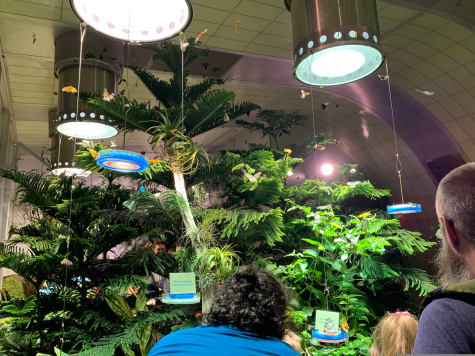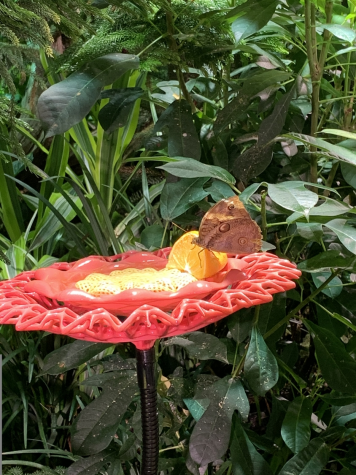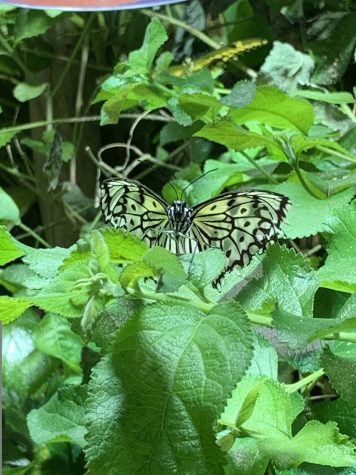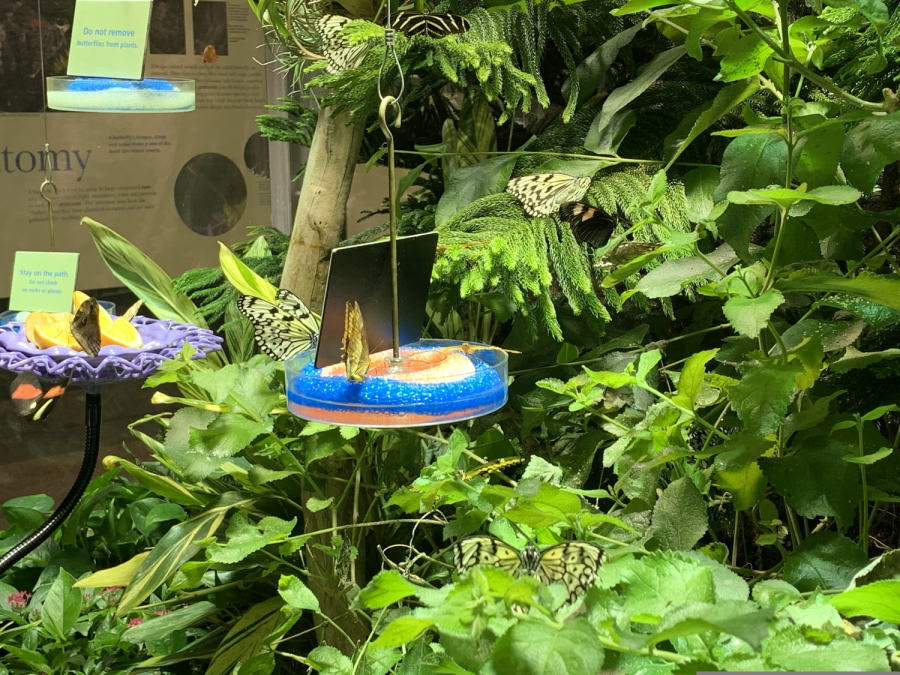Butterflies Spring Into Winter
The American Museum of Natural History reopens the butterfly conservatory.
The museum’s butterflies are various, belonging to multiple subfamilies within Papilionoidea.
Winter, of course, has its positives, but it is easy to tire of any season, especially when it brings diseases, numerous layers of clothing, and midyears. At this point, fall is a faint memory, and spring even fainter. Yet with the butterfly conservatory, the American Museum of Natural History has brought some more tropical weather to New York City.
The seasonal exhibition, running this year until May 25th, 2020, allows visitors to see butterflies close up and observe their behaviors. With over 500 living, free-flying butterflies belonging to three of the five butterfly families, the conservatory is a welcome relief from the cold, dry weather and the seemingly never-ending darkness of the season. The butterflies are colorful, the lights are bright, and the room is humid. Green plants abound, as do large circular disks of butterfly food.
The conservatory provides a unique opportunity to interact with butterflies. While visitors are not allowed to touch the butterflies, the butterflies are allowed to touch the visitors. “These butterflies fly really close to your face. It’s a whimsical but also concerning experience,” said Sophia Korono ’20. The boldness of the creatures draws many children who, attempting to entice a butterfly to land on them, hold themselves stiffly and, with wide eyes, point their fingers out.

One of the museum’s more popular exhibits, the butterfly conservatory is filled with people and butterflies alike. “The crowd is really split into two categories, children trying to catch the butterflies on their fingers and the people who are genuinely interested and amazed by butterflies,” Sophia Korono ’20 said.
Leading up to the butterflies themselves are a series of posters detailing the insects’ variety, life cycle, adaptations, and how endangered each species is. The posters are informative, but not comprehensive. After all, the main draw of the exhibition is the living creatures.
The docents are another draw. Knowledgeable about the butterfly life cycle and the habits of individual insects, they are unobtrusive, for the most part, leaving visitors to explore the conservatory on their own. At the entrance, they orient groups and point out aspects of butterfly behavior such as their method of nutritional intake. At the exit, they look for stowaway butterflies and carefully watch children who get too close to the insects. “The guides could answer any butterfly related question that you threw at them,” said Korono.
Beyond providing a fascinating glimpse into the lives of butterflies at large, the guides also reveal how the resident butterflies are cared for in the artificial environment. They regularly sweep butterflies off the large, metal heating cylinders on the ceiling and explain their aggressive-looking actions to shocked children. The butterflies are drawn to the heat and, unless given a push, will stay where it’s warmest and forget to eat. Such insights into the care of the butterflies are some of the more interesting aspects of the conservatory.

“How do butterflies cheer you up? They drink nec-tears,” Korono said. This butterfly drinks juice from a fruit.
Even without the docents, the exhibition within itself would still be worthwhile. “There was a mini section for cocoons which I found pretty interesting, and some of them were hatching which made the whole experience really awesome,” Korono said. “I got a whole tour of the life cycle of a butterfly in one room!”
As encompassing as the butterfly exhibition is, admission is not. Note that general museum admission is ‘pay what you wish,’ but the butterfly conservatory is considered a special exhibition and has an actual ticket price. It’s also one of the more popular exhibitions and is consequently crowded. “It was hard to move around. Also I was pretty paranoid about a butterfly landing on me because I thought if it touched me I’d accidentally kill it,” said Korono.
Despite these drawbacks, being surrounded by hundreds of butterflies is a once in a lifetime and worthwhile experience. The American Museum of Natural History’s butterfly conservatory is both fascinating and informative. “You’d better go to the butterfly exhibit, as it’s pretty fly,” said Korono.

“Butterflies are one of those creatures that you learn about extensively in elementary school and then never really think about ever again. Stepping into a butterfly exhibit took me on a nostalgia trip,” Korono said.
“These butterflies fly really close to your face. It’s a whimsical but also concerning experience,” said Sophia Korono.
Shira Mansell is a Copy Chief Editor for ‘The Science Survey’ and a People Reporter for ‘The Observatory.’ He enjoys the analytical and investigative...











